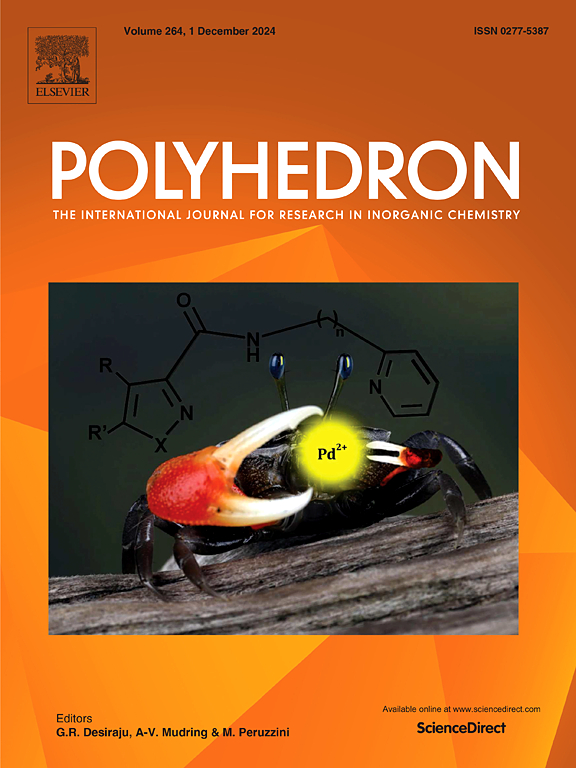Pseudomorphic replication as enabling technology for porphyrinic metal–organic framework thin film growth
IF 2.4
3区 化学
Q2 CHEMISTRY, INORGANIC & NUCLEAR
引用次数: 0
Abstract
The synthesis of porphyrinic Al2(OH)2MTCPP (M = Co, Cu, Fe, Zn, H2; H2TCPP refers to 5,10,15,20-tetrakis(4-carboxyphenyl)porphyrin) metal–organic framework (MOF) thin films is demonstrated. Combining atomic layer deposition (ALD) and pseudomorphic replication (PMR), such thin films were for the first time grown on metallic copper substrates and gas diffusion electrodes (GDEs). The PMR process transforms an ALD-applied metal oxide layer into a MOF thin film upon exposure to a metalloporphyrin linker. Reflecting substrate requirements, MOF thin films were synthesized via conventional solvothermal heating for copper substrates or microwave-assisted heating for GDEs, with the latter significantly reducing reaction times from days to minutes. Characterization by scanning electron microscopy and X-ray photoelectron spectroscopy confirmed the structural integrity and uniformity of the films. This work expands the arsenal of methods that are available for integrating MOF thin films into functional, in particular, porous electrode materials, paving the way for future advancements in catalysis and electrochemical applications.

伪形态复制技术促进卟啉金属有机框架薄膜的生长
卟啉型Al2(OH)2MTCPP (M = Co, Cu, Fe, Zn, H2)的合成H2TCPP是指5,10,15,20-四(4-羧基苯基)卟啉)金属有机框架(MOF)薄膜。将原子层沉积(ALD)和伪晶复制(PMR)相结合,首次在金属铜衬底和气体扩散电极(GDEs)上生长出这种薄膜。PMR工艺将ald应用的金属氧化物层在暴露于金属卟啉连接体后转化为MOF薄膜。考虑到衬底的要求,MOF薄膜是通过传统的溶剂热加热铜衬底或微波辅助加热gde合成的,后者显着将反应时间从几天缩短到几分钟。通过扫描电镜和x射线光电子能谱的表征证实了膜的结构完整性和均匀性。这项工作扩展了将MOF薄膜集成到功能性,特别是多孔电极材料中的方法库,为催化和电化学应用的未来发展铺平了道路。
本文章由计算机程序翻译,如有差异,请以英文原文为准。
求助全文
约1分钟内获得全文
求助全文
来源期刊

Polyhedron
化学-晶体学
CiteScore
4.90
自引率
7.70%
发文量
515
审稿时长
2 months
期刊介绍:
Polyhedron publishes original, fundamental, experimental and theoretical work of the highest quality in all the major areas of inorganic chemistry. This includes synthetic chemistry, coordination chemistry, organometallic chemistry, bioinorganic chemistry, and solid-state and materials chemistry.
Papers should be significant pieces of work, and all new compounds must be appropriately characterized. The inclusion of single-crystal X-ray structural data is strongly encouraged, but papers reporting only the X-ray structure determination of a single compound will usually not be considered. Papers on solid-state or materials chemistry will be expected to have a significant molecular chemistry component (such as the synthesis and characterization of the molecular precursors and/or a systematic study of the use of different precursors or reaction conditions) or demonstrate a cutting-edge application (for example inorganic materials for energy applications). Papers dealing only with stability constants are not considered.
 求助内容:
求助内容: 应助结果提醒方式:
应助结果提醒方式:


